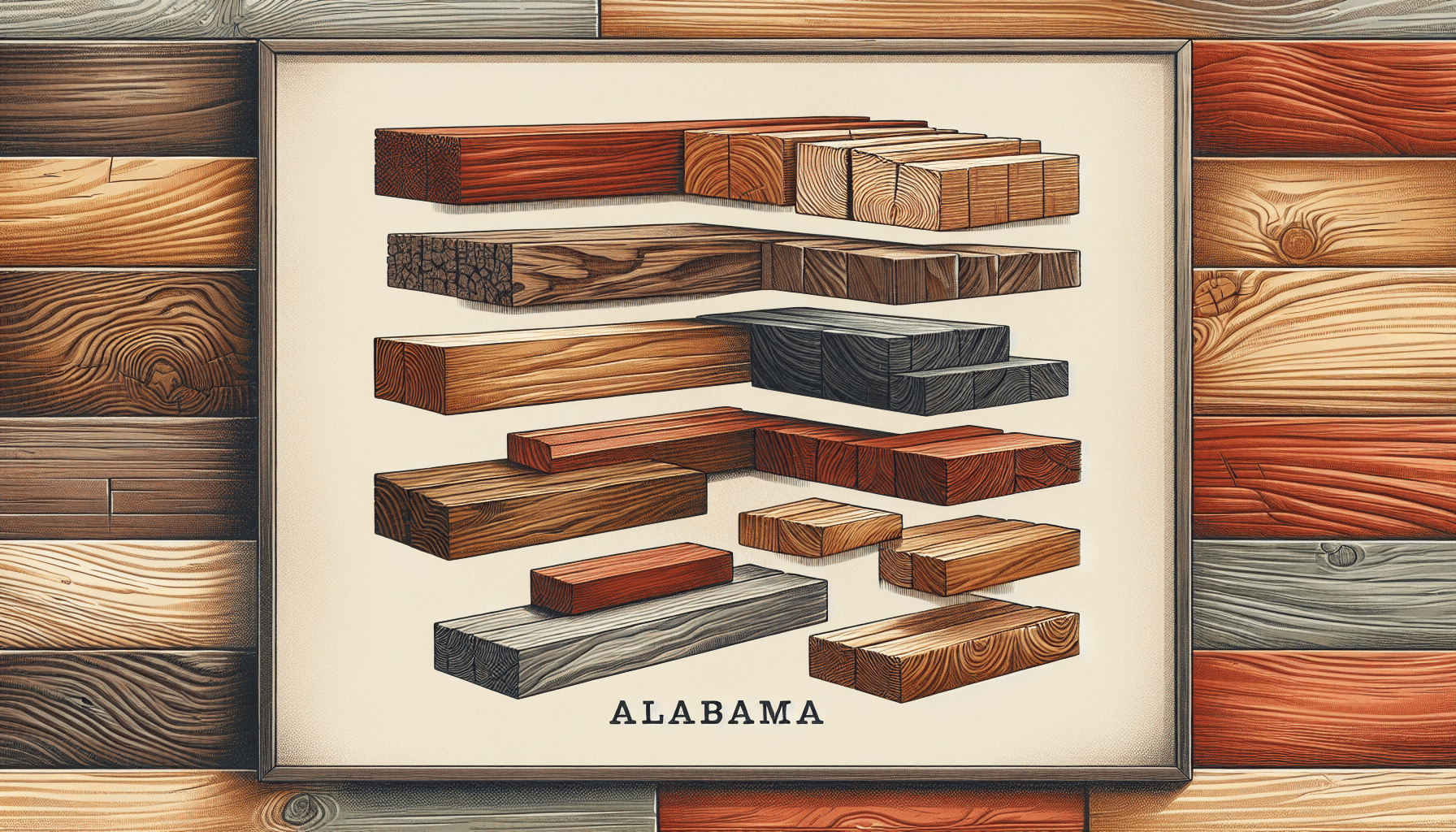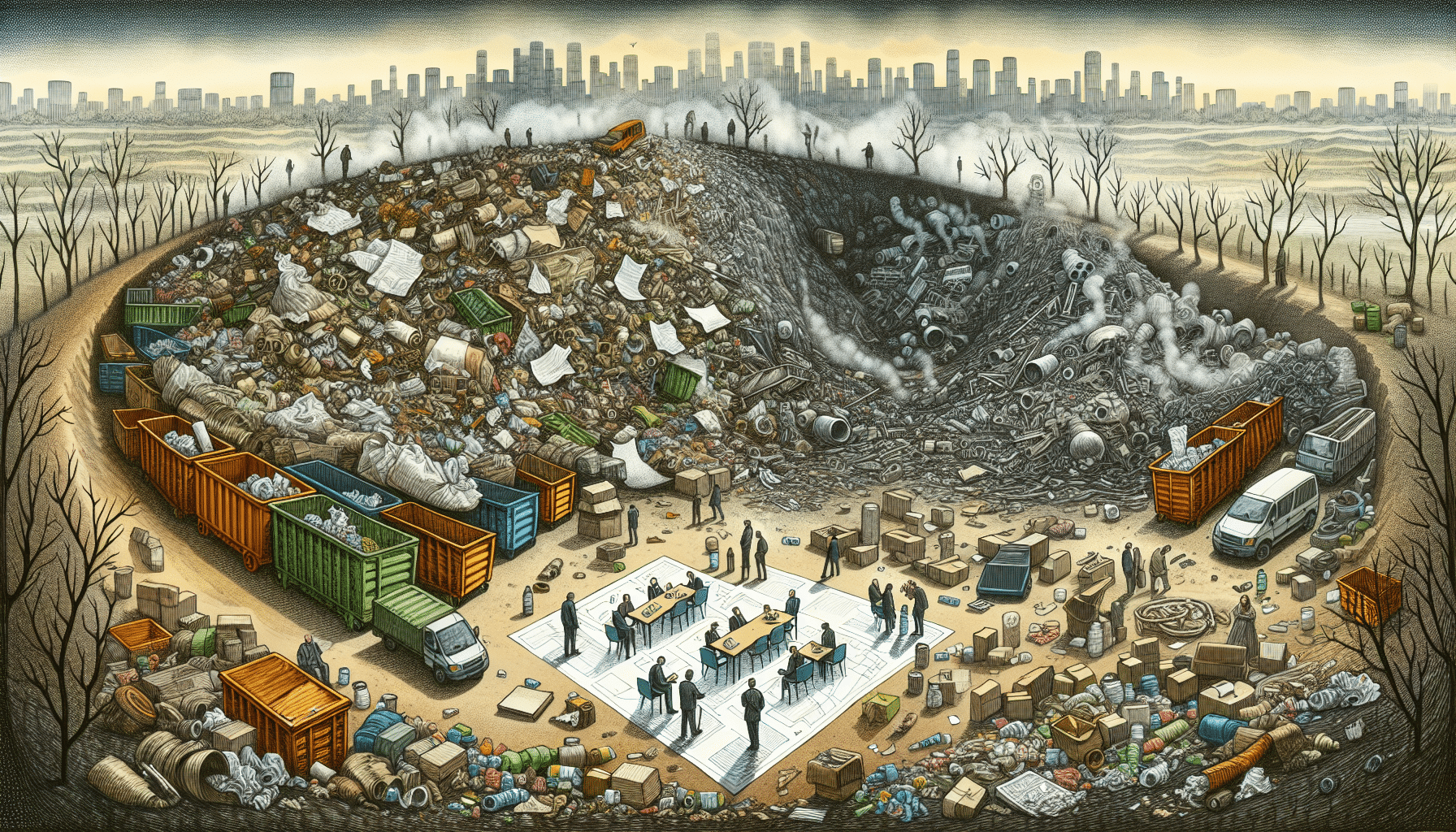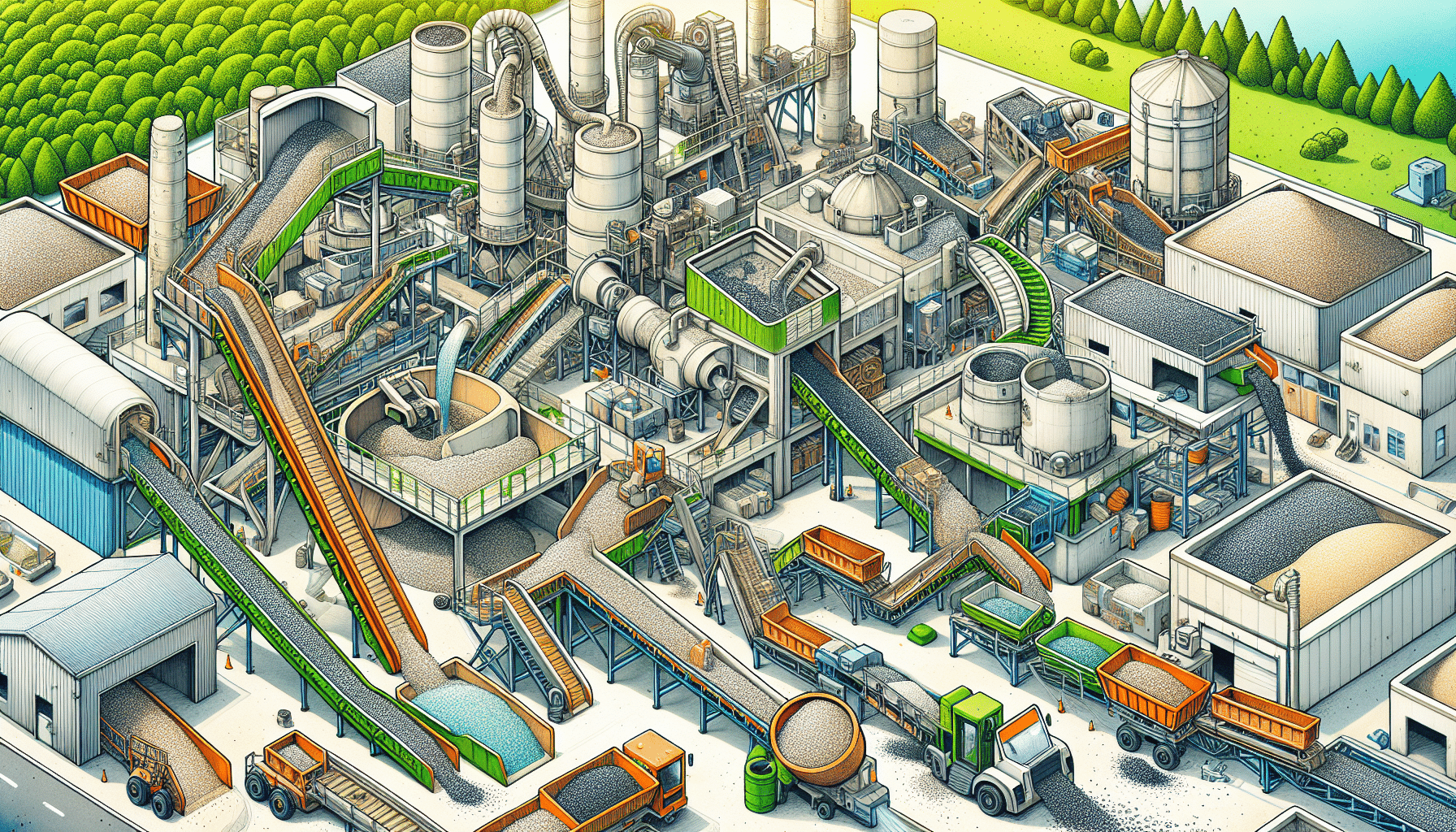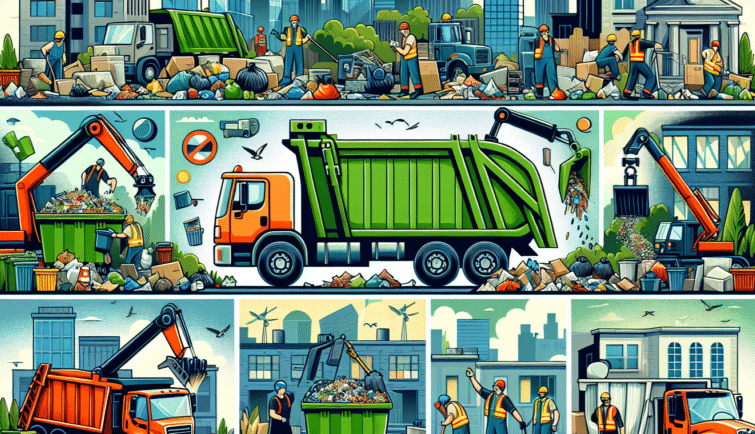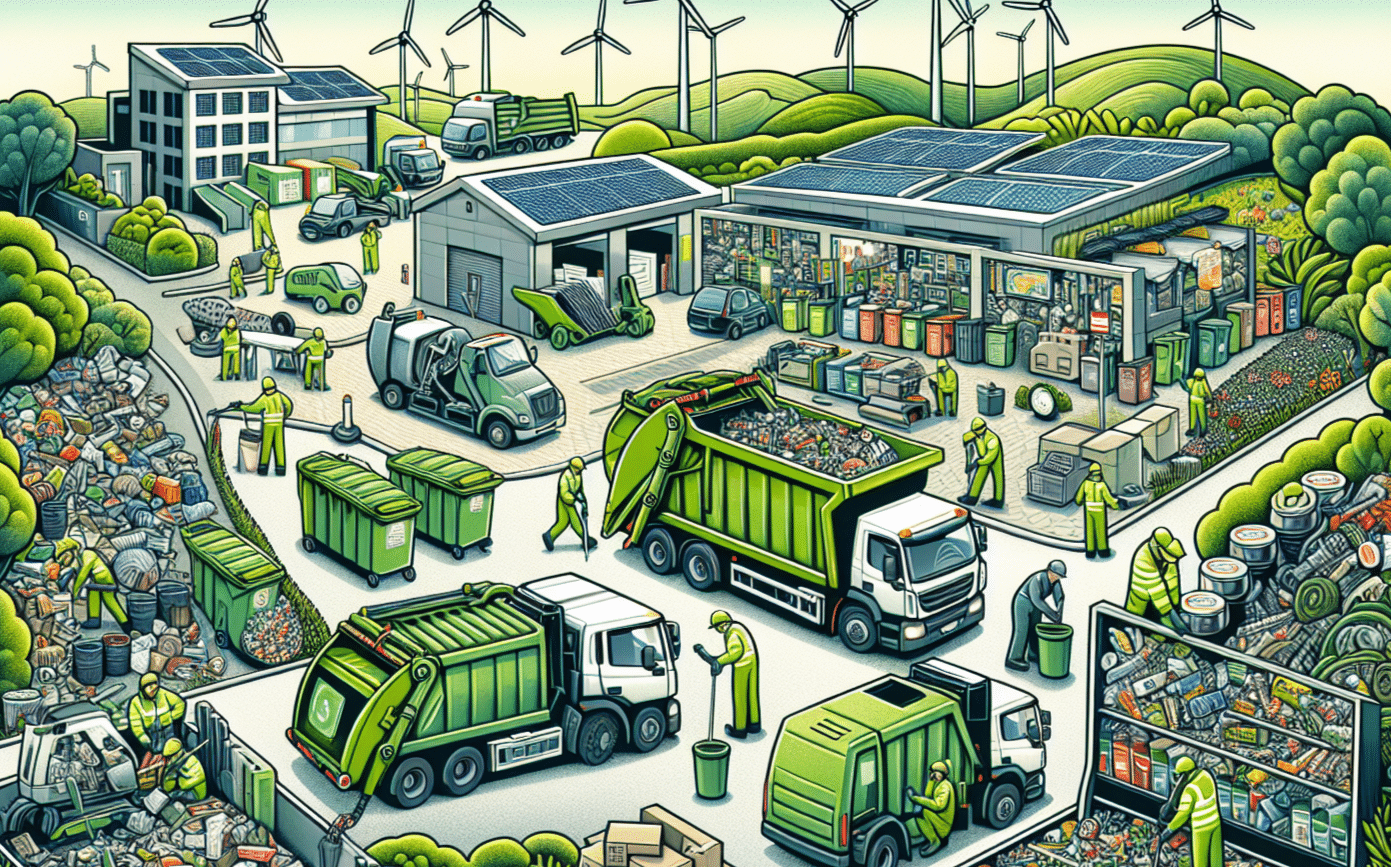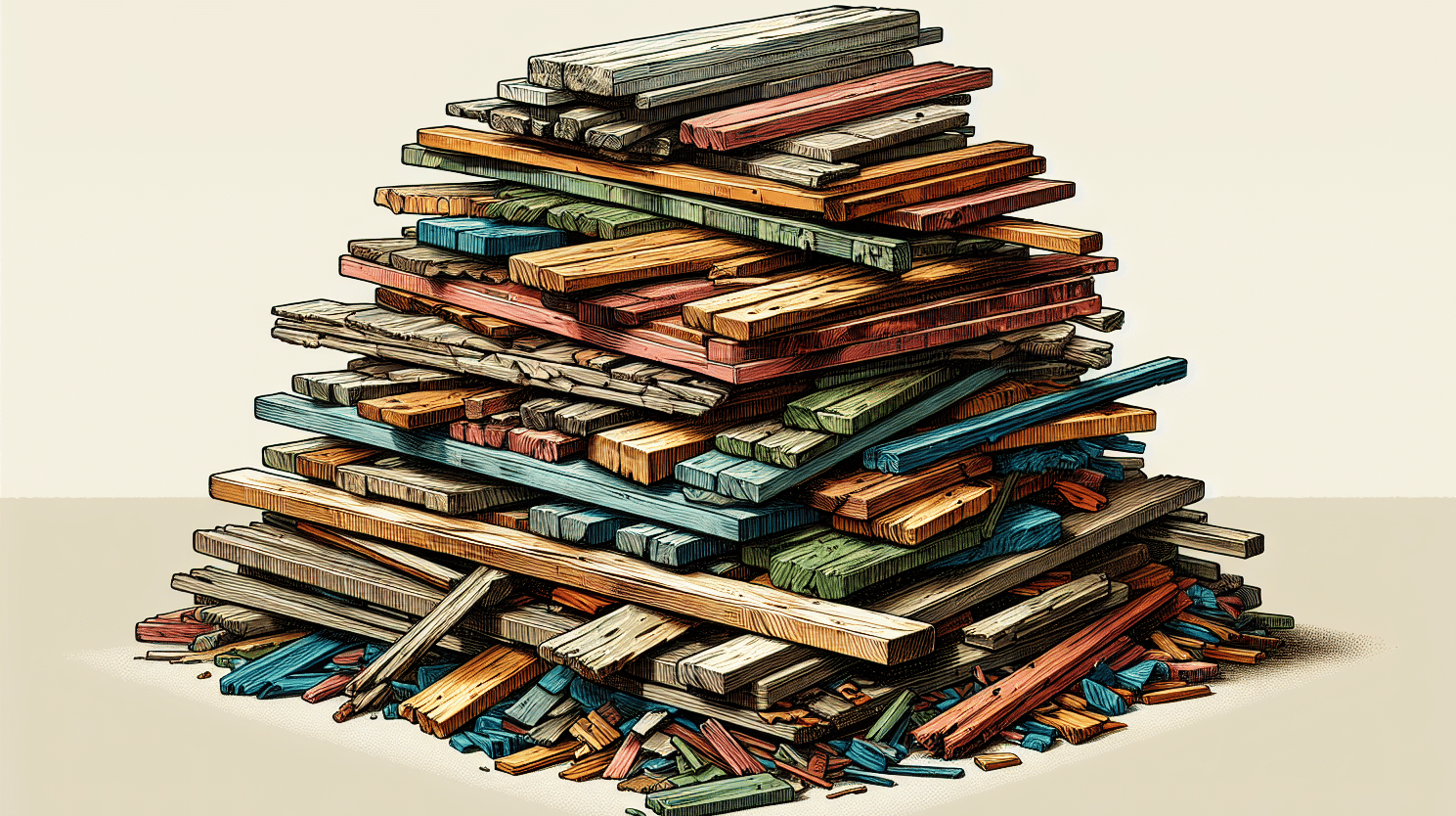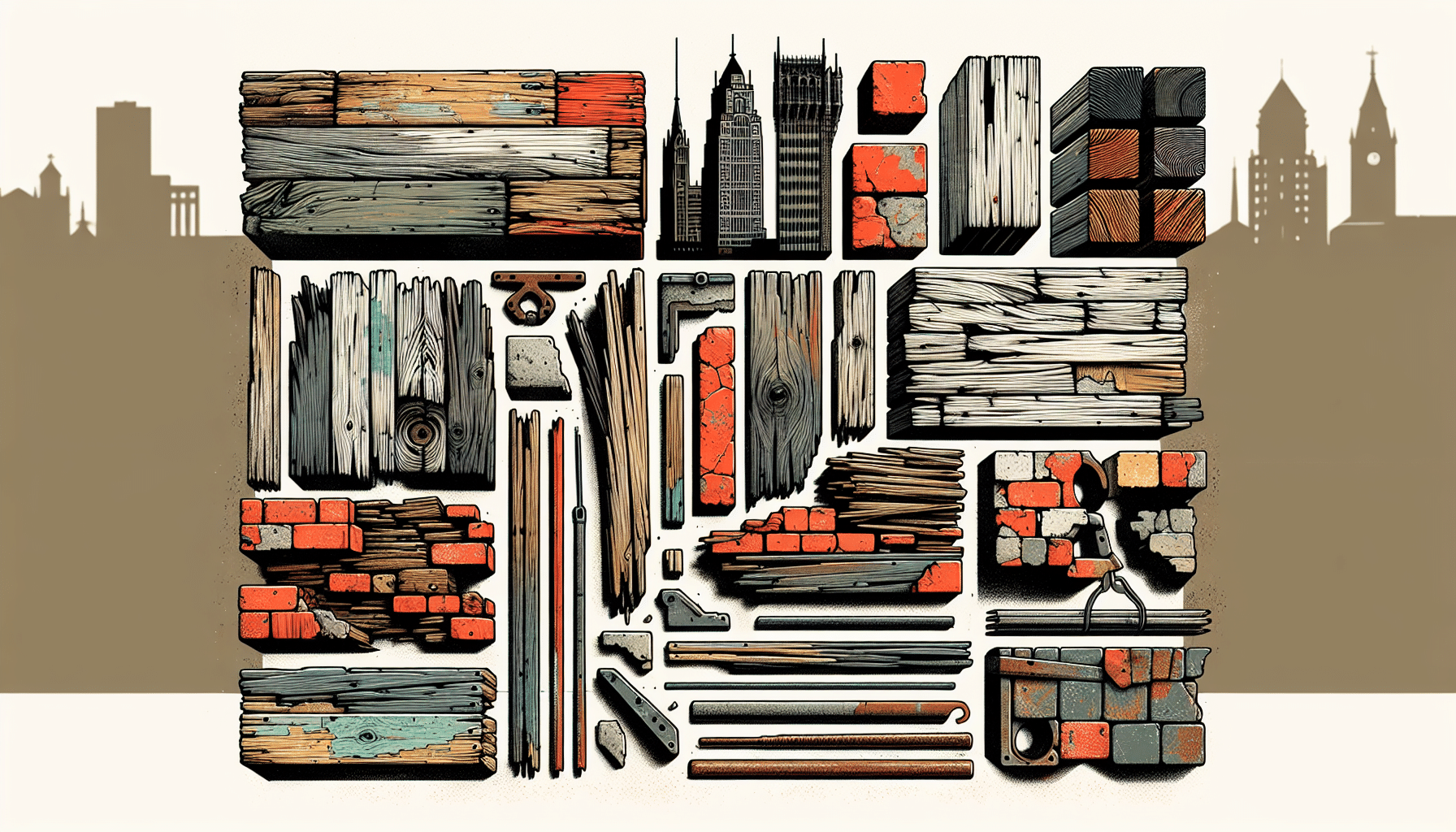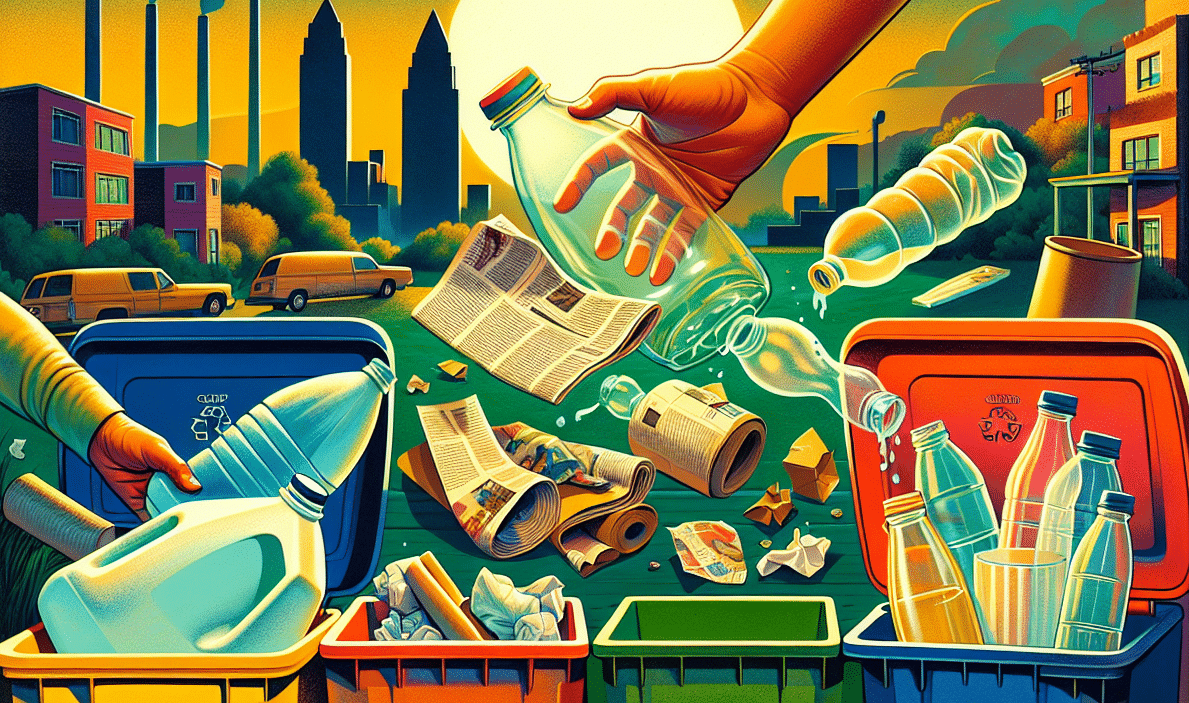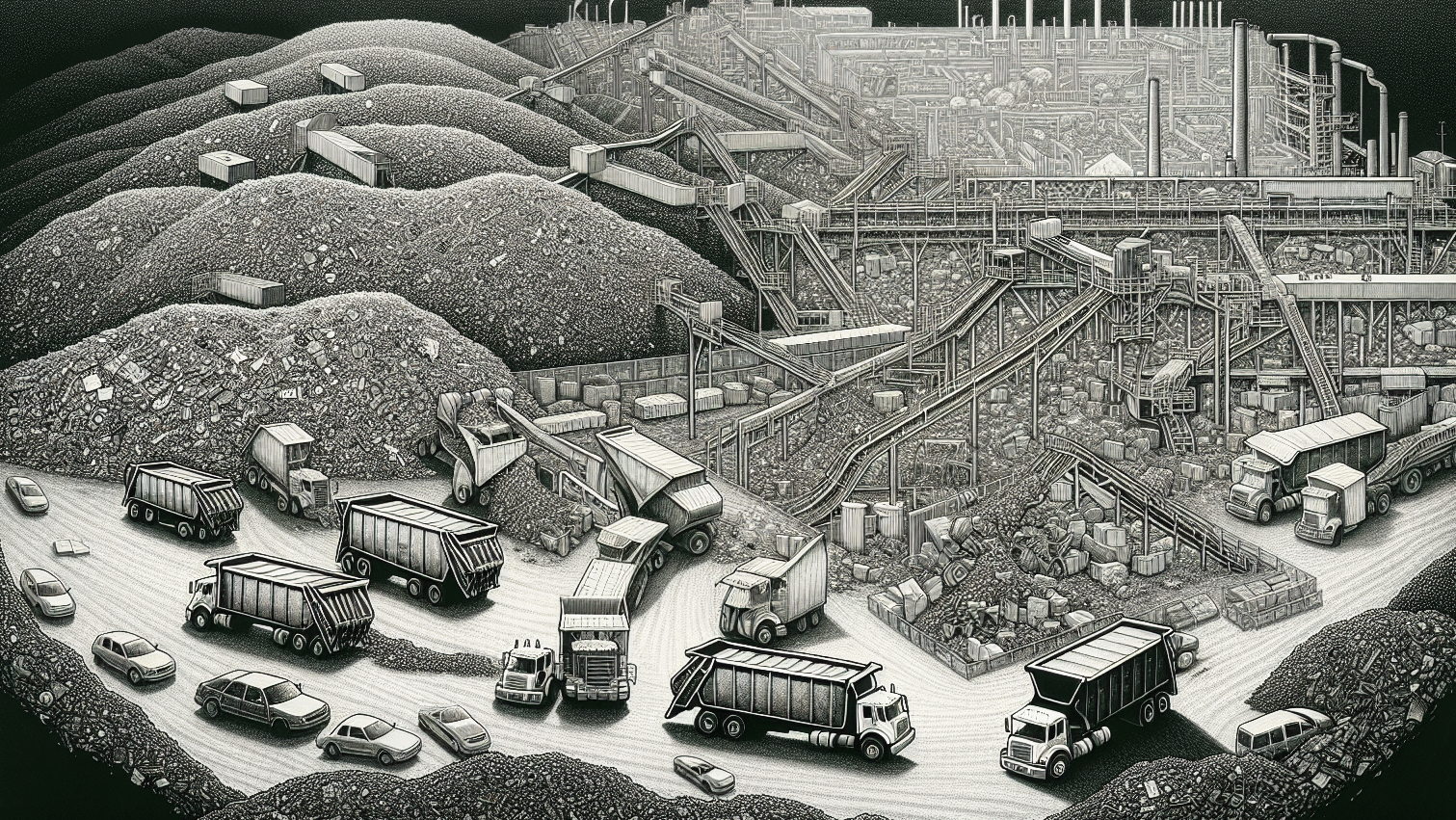Recycled grass has the potential to save you from waste and can invigorate your lawn and plants. This guide offers straightforward methods to compost, mulch, or directly feed your lawn with grass clippings, ensuring you’re supporting both the environment and your greenery.
Key Takeaways
- Recycling grass is a sustainable lawn care practice that involves leaving the clippings on the lawn or using them in compost piles to minimize waste and replenish soil nutrients.
- Proper mowing techniques, such as following the ‘1/3 rule’ for blade cutting and mowing when the grass is dry, are crucial for effective grass recycling and maintaining a healthy lawn.
- Seasonal adjustments in mowing height and watering, combined with correct composting and mulching practices, can enhance soil health, reduce the need for fertilizers, and contribute to a vibrant lawn year-round.
The Green Cycle: Understanding Grass Recycling
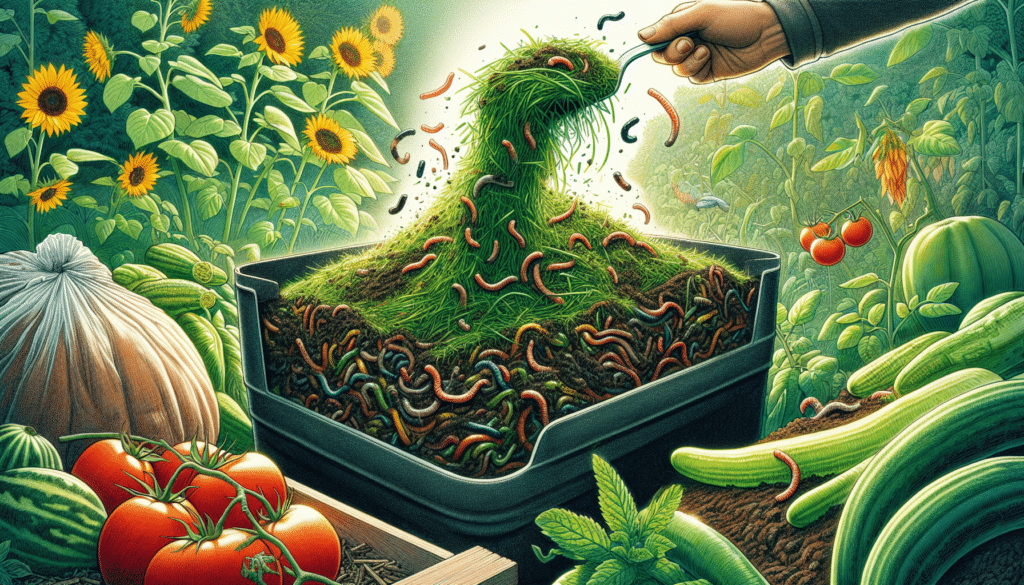
A typical lawn yields 300 to 400 pounds of grass clippings per 1000 square feet in a single year. This is a significant quantity of organic matter that can be harnessed effectively. Grass recycling’ is a sustainable lawn care practice that involves reusing these clippings instead of discarding them. When you leave the clippings on the lawn or incorporate them into your compost pile, you can minimize green waste and replenish the soil with essential nutrients.
The Art of Lawn Clippings Reuse
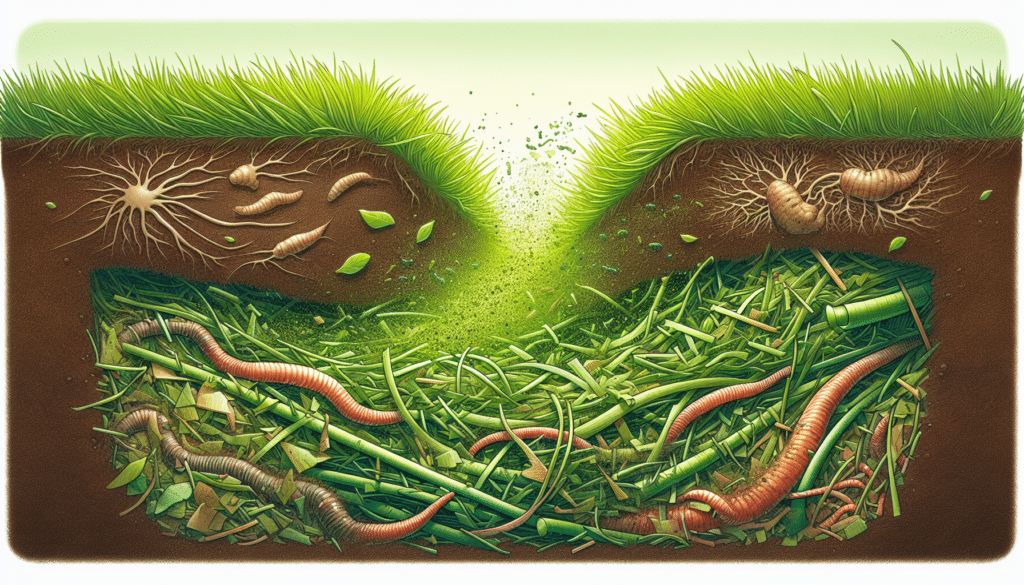
Multiple methods exist for reusing grass clippings that foster a healthier lawn ecosystem. For example, you can use grass clippings as mulch to help retain moisture in the soil and suppress weed growth. Grass clippings also act as a natural fertilizer, which can provide nutrients to your lawn as the grass clippings decompose. Each of these methods has unique benefits that can enhance your garden’s health and reduce landfill waste.
Leaving Clippings on the Lawn
Leaving the clippings on the lawn after mowing is one of the easiest ways to recycle grass. It’s a simple yet effective method that allows the clippings to decompose naturally on the lawn, recycling nutrients directly back into the soil. Next time you mow, consider leaving the clippings on the lawn instead of bagging them. Not only does it save time, but your lawn will also appreciate the additional nutrients.
Turning Clippings into Mulch
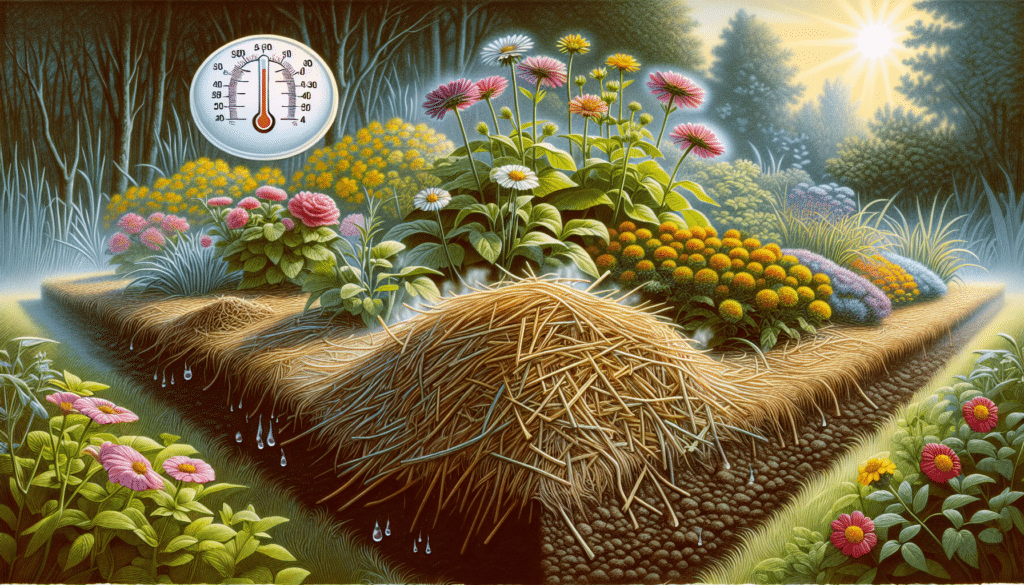
Another fantastic way to recycle grass clippings is by using them as mulch. Dry grass clippings can be spread around your garden plants to suppress weeds, regulate soil temperature, reduce erosion, and help conserve soil moisture. However, when using grass clippings as mulch, they should be dry and applied in layers no thicker than 1 or 2 inches to avoid issues such as matting and the resulting unpleasant odor from anaerobic decomposition.
Composting: Your Backyard Recycling Center

Transform your backyard into a natural recycling center with composting. Grass clippings can be composted at home, serving as an excellent source of nitrogen for your compost pile and contributing to nutrient-rich compost alongside carbon-rich materials. However, to ensure a balanced composting process and prevent unwanted odor, grass clippings should be mixed with carbon-rich dry materials such as dry leaves, straw, shredded newspaper, or cardboard. By mixing grass clippings with these materials, you can create a healthy and productive backyard compost pile.
Mowing for Maximum Recycling

Having explored various grass recycling methods, let’s move on to discussing optimized mowing techniques for effective recycling. Proper mowing techniques are vital to ensure effective grass recycling. This includes adhering to the ‘1/3 rule,’ which means never removing more than one-third of the grass blade at a time to prevent stress and promote healthier recycling of clippings.
It is a good practice to mow when the grass is dry to avoid lawn shredding, with increased mowing frequency recommended during high-growth seasons to avoid accumulation of clippings. Altering mowing directions can also help prevent soil compaction and ensure an even distribution of clippings.
Choose the Right Mower Height
Different grass types require specific mowing heights for optimal recycling. For instance, bentgrass thrives at 1/2 – 1 inch, while tall fescue prefers 1 1/2 – 3 inches. Clippings that are 1 inch or less in length decompose quickly and are ideal for leaving on the lawn to recycle without causing damage. Additionally, maintaining a minimum grass height of 3 inches allows for sufficient photosynthesis and shades the soil. During the summer, it’s advisable to raise the mowing height to promote deeper root growth, enabling the grass to better withstand drought and heat.
Keep Mower Blades Sharp
Sharp mower blades are essential for maintaining healthy lawns. Dull blades damage the grass by tearing it, leading to browning and increased susceptibility to disease. Having an additional set of mower blades on hand is beneficial for immediate replacement to maintain sharp cuts.
Preventing Common Pitfalls in Grass Recycling
While grass recycling is a beneficial practice, there are certain pitfalls to avoid. For instance, leaving excessive grass clippings on the lawn can contribute to thatch buildup and damage the grass underneath. If the lawn is heavily infested with diseases, it’s best to remove clippings to reduce the severity and spread of the disease. It is also ideal to avoid composting clippings from lawns that have been sprayed with pesticides or herbicides, or from lawns that have diseases, to prevent contamination.
Thatch Misconceptions Debunked
Grass clippings as whole are not a significant contributor to thatch buildup. The real causes of thatch buildup are compacted soils, excessive use of chemical pesticides and synthetic fertilizers, and inadequate lawn watering, all of which inhibit microbial activity necessary for decomposing lawn debris. While a thin layer of thatch is normal and can even be beneficial, exceeding three-quarters of an inch is when thatch can become problematic, leading to increased vulnerability to diseases and environmental stress.
Healthy Lawn, Healthy Recycling
Maintaining proper watering and fertilization helps to contribute to a healthier lawn and more efficient grass recycling. Using a combination of fast-acting and slow-release nitrogen fertilizers helps maintain a healthy lawn without causing rapid, unsustainable growth. Grass recycling practices that include proper watering and fertilizing can maintain lawn health and mitigate the need for frequent mowing. Deep and infrequent watering practices result in a more resilient lawn by encouraging deeper and stronger root growth.
Enhancing Soil Health with Organic Matter
Grass clippings can significantly enhance your soil’s health by decreasing the need for extra nitrogen fertilizer. Using grass clippings also
enhances soil moisture and promotes healthy plant growth. Additionally, mixing grass clippings with nitrogen-fixing plants like perennial clovers has several benefits for the soil and surrounding flora as it increases nitrogen availability and helps suppress weeds due to its high nutrient content.
Grass Recycling Beyond the Lawn
Grass recycling extends beyond the confines of your backyard. Community gardens may welcome grass clippings for their shared compost piles, presenting an alternate disposal option for yard waste. By diverting grass clippings to community composting, you’re not only reducing organic waste in landfills but also contributing to a community initiative that benefits local gardens and parks.
Seasonal Tips for Grass Recycling
Grass recycling requires seasonal adjustments. Raising the mowing height during summer can promote deeper root growth and protect the grass from the stress of drought and heat. During the active growing season, grass typically needs about 1 inch of water every 5 to 7 days, and less water during slower growth periods. By adjusting your grass recycling practices with the changing seasons, you can ensure a healthy, vibrant lawn all year round.
Summary
In our journey through the world of grass recycling, we’ve uncovered some simple yet effective strategies to recycle grass clippings, adding value to our lawns and gardens while contributing to a greener planet. From composting to community donations, every method of grass recycling offers unique benefits. By adopting these practices, you are not only promoting a greener lawn but also contributing to a more sustainable future.
Frequently Asked Questions
Can I leave grass clippings on the lawn?
Yes, you can leave grass clippings on the lawn to recycle nutrients back into the soil.
Can I use grass clippings as mulch?
Yes, you can use grass clippings as mulch to suppress weeds, regulate soil temperature, and conserve moisture in your garden.
What should I do with excessive grass clippings?
You can compost excessive grass clippings or donate them to community gardens to handle the abundance in an eco-friendly way.
Does grass recycling contribute to thatch buildup?
Contrary to common belief, grass recycling through clippings does not significantly contribute to thatch buildup. Thatch is mainly composed of roots, stems, rhizomes, crowns, and stolons, not grass clippings.
Can I recycle grass clippings that have been treated with herbicides?
No, it’s best to avoid using grass clippings treated with herbicides for mulch or compost as they can potentially harm the soil.

























